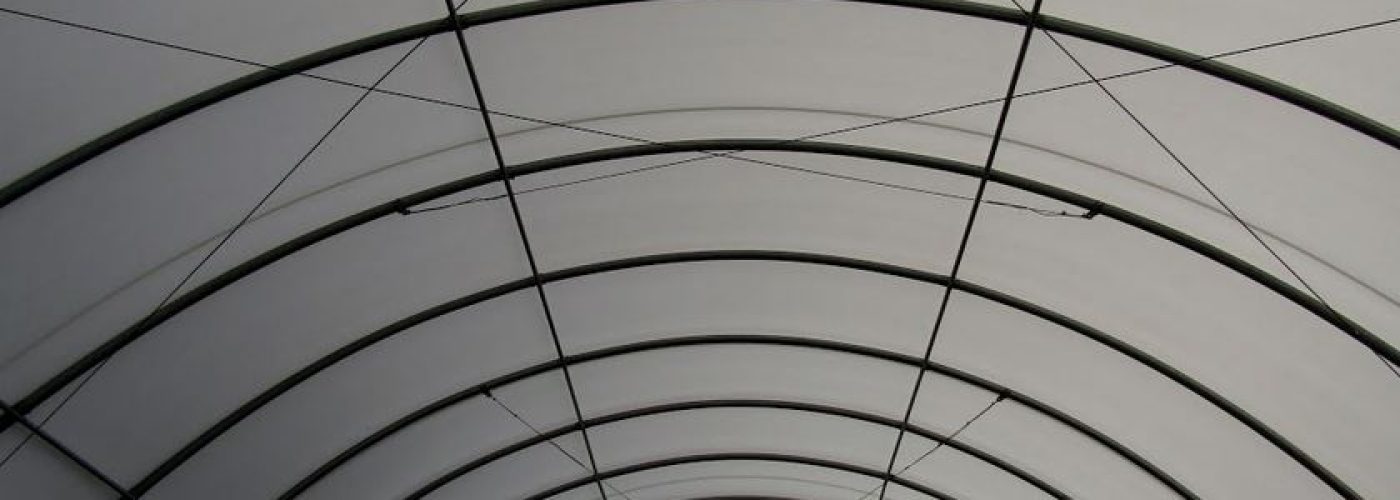A tension fabric structure is an architectural design that consists of a framework which deals with the tension part and a cover, which is typically made of fabric, hence the name.
The rigid framework serves as the primary architectural support for the entire structure, while the fabric serves as the cladding or covering.
Although it has only become prevalent lately, its concept isn’t new by any means. It’s been around for ages, as evident with the existence of tents, a structure that uses the same concept as tension fabric structures. You set up the tent poles (framework) and stretch them over so the cover can spread and create the overall design.
Due to their ability to withstand severe weather conditions, they became the perfect fabric structures for industrial use. Unfortunately, much like tents, setting up tension fabric structures can be pretty challenging, especially if you’re not as knowledgeable of its concept. But that’s not to say it’s impossible to figure it out. Read on to learn how to install tension fabric structures.
Designing The Structure
Before anything else, the team would have to go through the design phase. This is where you would make the important decisions. In this phase, you’ll have to determine the pattern and shape of the entire tension fabric structure. Naturally, your decision would affect the actual installation process. You’ll also have to decide what materials you’ll be using for the framework, although you most likely would use steel for that part. The same goes for the fabric, and you’ll often find yourself choosing from the following options:
- Laminated polyesters
- Polyesters coated with polyvinyl chloride (PVC)
- Woven fiberglass coated with polytetrafluoroethylene (PTFE)
Manufacturing The Components
As you may already know, each structure consists of components with varying shapes and sizes. That’s why only after you or the project manager decides on the overall setup of the structure can you start manufacturing the components. Usually, you have to use precision production equipment such as laser cutting to weld and shape the components of the tension fabric structure. It’s also essential to apply coating on the surfaces of these parts.
Once these are available, installation should now be possible. But of course, you must first ensure that the construction area is safe both for your workers and the general public.
Stage The Area
Before the actual installation, you must first arrange the area for public safety. You can do this by placing fences, placing signs, etc. Your crew may also tear down existing structures if they’re on the way, given that you were already given permission. Once that’s done, the work zone should now be safe to work on, and the installation will officially begin
Establish The Support Structures
The first part of the actual installation process is the placing of support structures, more specifically, the steel framework. These are usually erected by the crew manually, but you may use lifting equipment depending on the size. This part is perhaps the easiest part of the installation process, but if you encounter difficulties, using cables would be the best next step.
Laying Out Cables
Regardless of the shape you want the tension fabric structure to take, cables would always play a significant role in the architecture. This is mainly because it maximizes the safety around the work area and serves as a support or supplement for the steel framework. Although there are different kinds of cables, all of them serve as a way to add stability while preventing any accidents when deploying the fabric cover, which would be the next step.
Deploy The Fabric Cover
Once the steel frame and cables are laid out in a predetermined location, the staff will add a film or fabric covering. There are several ways to deploy the fabric, but it’s important to always handle it with care since they can be fragile before the tensioning process. Furthermore, fabrics are affected by the wind, so the crew must be skilled to handle the deployment of the membrane. The structure may not look much after this step, but it should come together once you tension the fabric.
Tensioning The Fabric
Tensioning is the process of stretching something, and in this case, tensioning means stretching the fabric to achieve the desired results. This is perhaps the most challenging step of the entire process since you’ll have to make sure you stretch the fabric in all directions with the same intensity. By doing this, you can prevent wrinkles from forming on the fabric. Of course, even after this step, there would still be some issues with the final result.
Final Words
After completing each step, the crew must conduct a final inspection and quality assurance to ensure everything is in place. Usually, during the final touch – up, the staff will clean the fabric or remove slight wrinkles. Doing so can not only improve the aesthetics of the fabric cover, but also ensure the highest durability of the structure.






